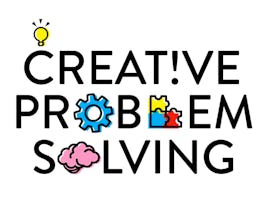The blues is an American art form and the most important musical form in jazz. Although there are other formal paradigms of the blues, such as 8-bar or 16-bar, this course focuses on different incarnations of the 12-bar blues. There are considerable differences between Early Jazz blues, Swing blues, Bebop blues, Modal blues, and Post Bop blues. Each type has its unique harmonic syntax, melodic vocabulary and, associated with them, improvisational techniques. While other aspects of jazz performance practice have been constantly changing from one stylistic convention to another, the blues has never lost its identity and expressive power, and continues to exert a powerful influence on the harmonic and melodic syntax of jazz.

New year. Big goals. Bigger savings. Unlock a year of unlimited access to learning with Coursera Plus for $199. Save now.


The Blues: Understanding and Performing an American Art Form

Instructor: Dariusz Terefenko
34,446 already enrolled
Included with 
(598 reviews)
What you'll learn
Students will be able to describe the blues as an important musical form.
Students will be able to explain differences in jazz and other variations of the blues.
Skills you'll gain
Details to know

Add to your LinkedIn profile
7 assignments
See how employees at top companies are mastering in-demand skills


Earn a career certificate
Add this credential to your LinkedIn profile, resume, or CV
Share it on social media and in your performance review

There are 7 modules in this course
Lesson 1 focuses on foundational aspects of the blues, examining its history, innovation, and evolving harmonic structure. At the end of this lecture, students should have a firm understanding of the harmonic structure of the basic, generic, and minor blues forms, as well as a familiarity with the A A’ B phrase-structure of the blues.
What's included
7 videos1 assignment
Lesson 2 dives into what makes the blues tick, beginning with an examination of the blues scale and the basics of jazz rhythms and blues riffs. Students will then explore call and response techniques and application of the blues scale in improvisation through demonstration with a live musician.
What's included
6 videos1 assignment
Lesson 3 introduces the concept of guide tones and its association with invertible counterpoint. Four-part and five-part chords are discussed in detail by exploring their construction and function, as well as techniques to facilitate good voice-leading between chords using chordal inversions.
What's included
7 videos1 assignment
In lesson 4 students analyze harmonic progressions from 3 jazz standards: “Now’s The Time,” “Billie’s Bounce,” and “Blues For Alice.” Practice techniques are discussed, including ear-training strategies, rhythmic displacement, and voice-leading exercises.
What's included
7 videos1 assignment
Lesson 5 introduces 3 more jazz standards for analysis: “Mr. PC,” “Mr. Day,” and “Isotope.” Tritone substitutions are examined, and pentatonic scale as tools in improvisation are introduced through exploration of their construction, typical voicings, and voice-leading principles.
What's included
8 videos1 assignment
Lesson 6 centers around the demonstration of improvisational techniques discussed thus far, including motivic development, guide-tone lines, and chordal arpeggiation. Observation of live Eastman musicians, as well as play-along tracks provided by the rhythm section, allow the student to imitate, assimilate, and apply the techniques discussed in the course.
What's included
14 videos1 assignment
Lesson 7 explores modal categories and scalar patterns in improvisation, in addition to continued discussion on pentatonics. As in the previous lesson, live musicians demonstrate key concepts and principles presented in the lecture, with additional play-along tracks provided for the student to explore concepts on their own.
What's included
12 videos1 assignment
Instructor

Offered by
Recommended if you're interested in Music and Art

Wesleyan University

University of Minnesota

Michigan State University

Michigan State University
Why people choose Coursera for their career




Learner reviews
598 reviews
- 5 stars
86.81%
- 4 stars
10.85%
- 3 stars
1.50%
- 2 stars
0.33%
- 1 star
0.50%
Showing 3 of 598
Reviewed on Mar 18, 2018
Good course.
Reviewed on Feb 25, 2017
A very comprehensive course with clear explanation on the various type of the progressions and scales used in Jazz and Blues music.
Reviewed on Dec 30, 2016
The most interesting and complete course about the blues I've have ever seen! Structured, clear and very kind form of teaching. Thank you, Dariusz!

Open new doors with Coursera Plus
Unlimited access to 10,000+ world-class courses, hands-on projects, and job-ready certificate programs - all included in your subscription
Advance your career with an online degree
Earn a degree from world-class universities - 100% online
Join over 3,400 global companies that choose Coursera for Business
Upskill your employees to excel in the digital economy
Frequently asked questions
Access to lectures and assignments depends on your type of enrollment. If you take a course in audit mode, you will be able to see most course materials for free. To access graded assignments and to earn a Certificate, you will need to purchase the Certificate experience, during or after your audit. If you don't see the audit option:
The course may not offer an audit option. You can try a Free Trial instead, or apply for Financial Aid.
The course may offer 'Full Course, No Certificate' instead. This option lets you see all course materials, submit required assessments, and get a final grade. This also means that you will not be able to purchase a Certificate experience.
When you purchase a Certificate you get access to all course materials, including graded assignments. Upon completing the course, your electronic Certificate will be added to your Accomplishments page - from there, you can print your Certificate or add it to your LinkedIn profile. If you only want to read and view the course content, you can audit the course for free.
You will be eligible for a full refund until two weeks after your payment date, or (for courses that have just launched) until two weeks after the first session of the course begins, whichever is later. You cannot receive a refund once you’ve earned a Course Certificate, even if you complete the course within the two-week refund period. See our full refund policy.

